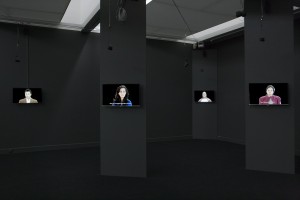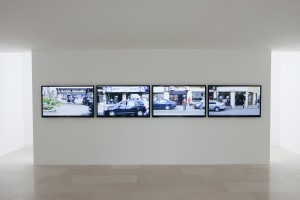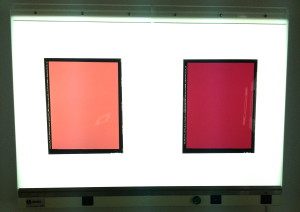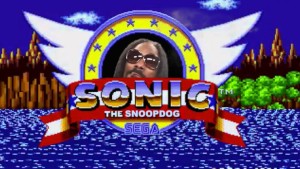
So much information exists within the fourth dimension of the internet, but what are the advantages of moving back into the third dimension of the non-virtual world? In their exhibition at Villa Arson in Nice, Lebanese filmmakers Joana Hadjithomas and Khalil Joreige bring an unexplored online realm into the gallery, breaching the borders through various models of translation.
Since 1999 the artists have been researching the “scam email”. This phenomenon exists within the fifth dimension of the junk mailbox, an even more liminal space than the internet itself, a purgatory where mail is directed and emptied, yet never saved or documented. Saving examples along the way, Hadjithomas and Joreige researched the history of the scam, discovering it’s relation to political events, it’s frequency in some countries and its deficiency in others.
The scam email is a prime example of how the properties of the internet can be exploited. Sitting behind a screen in an internet cafe, anonymity increases the power of scammers. They can adopt another identity, become more confident and they are even protected, physically and emotionally, by the absence of any real human contact with their victim. Mass communication is also easily achievable through the email format, along with cloning tools such as copy and paste.
There is also a whole history behind the scam which although now takes on a very contemporary format, was initially an old fashioned ploy in the form of a letter nicknamed a “Jerusalem Letter” or “Spanish Prisoner”. The style of scam originated in France at the end of the 18th century during the French Revolution. The letters took advantage of a common nostalgia for the Ancient Regime and the name originates from the prison where the scammers were sent, on rue de Jerusalem.
The inbox scam therefore, due to its humble origins as a letter, relies firstly on the properties of the non-virtual world; it is a very unique personal appeal, adopting a tone that suggests the letter has been sent out to an individual. In their piece The Rumor of the World (2014), Hadjithomas and Joreige upgrade the scam from text to words using non-professional actors to read aloud the scams.
Screens fill the room and although there are 23 faces, one will manage to pull you closer under their spell. The scammer is given a trustworthy face, a convincing voice and he or she will look deep into your eyes with focussed intensity. The lexicon is direct with specific details outlined such as dates, names and places, yet also full of emotion and appealing for sympathy.
In the internet cafe, the worlds begin to merge. The work (De)synchronicity (2014) is a film playing across four screens showing different internet cafes in Beirut. The familiar faces of the scammers move back and forth, appearing and disappearing across the screen, logging in and out of virtuality. These cyber-cafes occupy a zone somewhere between the virtual and non-virtual where people are anonymous; it’s a private space with little human interaction, no questions asked, but these people are physical.
And so, the two worlds exist alongside each other offering their different uses. Hadjithomas and Joreige show how despite existing online, the scams continue to display the properties of a non-internet entity choosing somehow the best of both worlds, yet still managing to fall to their fate, inside the junk mail box.
By Harriet Thorpe








